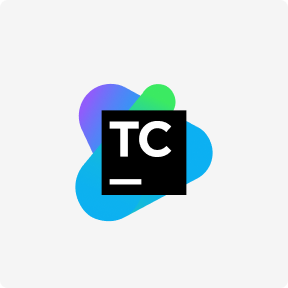In the old days, custom software was designed for huge corporations with deep pockets. Our list of the top mobile app development companies and their features will help you narrow your search. Everyone should have the software consulting rates opportunity to evaluate the goals and expectations for the project and weigh in. By getting approval from each key stakeholder and developer, teams can avoid miscommunications and costly change orders down the road.

The Martin method was tailored toward knowledge intensive and UI intensive business systems. Instead of following a rigid set of requirements, developers create prototypes with different features and functions as fast as they can. These prototypes are then shown to the clients who decide what they like and what they don’t. A major challenge with the waterfall model is that once the product moves into the testing phase, the tester cannot go back to reiterate and make changes to the core functions and features. This essentially leaves teams with a software that may or may not fit the end-users’ evolving requirements.
Rapid Application Development vs Other Software Development Models
This allows schedules and budgets to be maintained, despite adjustments being needed. Although you have to consider that just like other methodologies, at times, it may become expensive as you have to hire technology experts to fix a problem etc. This stage is also where the final product is ready for launch, assuring that the system maintains a desirable level and is stable, moreover, user training is carried in this phase too. Though the difference between this phase compared to other methodologies is that it is condensed, hence differentiating RAD from other methodologies. One of the most important aspects to bear in mind when using RAD is the fact that the prototypes that are created during iterations are reusable. The major differentiation between the two models was that Martin’s development had focused on working for models that were knowledge intensive and UI intensive, much like the systems in our era.
Consider the rapid application development model (RAD), invented by James Martin in 1991. Though it’s been around for a while, the RAD approach is still popular among those looking for Agile methods of application development to keep the software development life cycle in pace with growing business and client needs. When compared to other software development models, the RAD framework varies by a considerable amount. Obviously, the major difference is how rapid application development focuses on speed when compared to other models which usually focus on bringing a working product to the customer. The constant feedback loop through prototypes makes software usable and value-driven.
Phase 1: Requirements planning
You can create your own apps or customize existing apps to your requirements. It requires clients to commit to frequent review meetings and feedback sessions to ensure the product aligns with their requirements. RAD methodology is difficult to implement with multiple teams and a large number of developers.
«We have complex processes. Kissflow helps us enforce standard processes and makes sure nothing gets lost or goes wrong.» The requirement of a high level of commitment from all stakeholders is one of the pitfalls of using RAD for small projects and products. Effective time management is essential for product managers to meet stakeholder expectations, stay within budget, and keep moving the product toward its envisioned objectives. In 1991, he formally published the concept in a book titled Rapid Application Development, which emphasizes the concise development cycle.
Software Quality
Code reusability is a major factor to consider when following the Rapid Application Development model, since speed and efficiency do matter. RAD is a development paradigm that arose from realizing that the conventional waterfall model of development was ineffective. The waterfall prototype has a big drawback in that it’s impossible to modify the software’s key features and specifications until it’s in the testing process. As a result, you’re left with applications that can or cannot meet your changing needs. Developers use automation tools like CASE (computer-aided software engineering) technology and already written code. RAD tools help reduce app delivery time and increase developers’ efficiency.
- Feedback and reviews are crucial at this stage and most bugs, issues, and alterations are addressed during this stage.
- Implementing RAD requires a team that is well-versed in the technologies being used, able to work collaboratively, and comfortable with the iterative development process.
- But many companies are competing for the same consumers, and the only way to succeed is through differentiation.
- And project managers have taken notice—particularly among teams in industries like software development where technology, objectives, and targets are in constant flux.
- This requires team members to have strong engagement and time commitment, which can affect their motivation and productivity.
Bizagi is a BPM suite used to automate business processes and create customized workflows. It gives developers the high-end tools they need to create, deploy, and manage enterprise-grade applications quickly and efficiently. A rapid application development (RAD) tool is a comprehensive tool that helps organizations embrace the philosophy of rapid application development. It enables organizations to develop fully functional apps by laying emphasis on functionality without extensive planning and design phases. Once the project requirements are finalised, it’s then time to enter the development phase, which consists of building out the user design through various prototype iterations.
The James Martin RAD method
Rapid application development is still in use today and some companies offer products that provide some or all of the tools for RAD software development. Firstly, RAD can cause project teams to lose control over the project because of the accelerated design and development process. The teams may focus only on delivering the product quickly, instead of thoroughly planning and testing it, which can lead to quality issues with the product. RAD is the best approach to develop prototypes swiftly for testing software functionalities without worrying about any effects on the end product. Businesses opt RAD approach as it requires little focus on the planning phase while enabling the team to design, review, and iterate features and functionalities quickly.
Whereas with the Waterfall methodology, errors can only be distinguished at the very end, which can cause very big delay in trying to fix the problems, therefore meaning it’ll be very costly too. The final phase of the RAD methodology includes the finalisation of the aesthetics, features, functions, interface as well as everything else related to the software project. RAD is considered to be a methodology that requires minimal planning that will in-turn favour rapid prototyping. The advantage of using this model is that it allows developers to make multiple iterations and updates to a software quickly, without requiring to restart a development schedule from scratch every single time. Boehm had emphasized an approach that developed using prototypes as-well as or instead of rigours design specifications.
When to use the RAD model
The philosophy embraces the changing nature of client requirements and lays more emphasis on the development on the go rather than having an extensive, structured plan. Rapid Application Development (RAD) is a highly collaborative model, designed to bring together IT teams, business stakeholders, and end users. This collaboration is essential for ensuring alignment and delivering the best possible product. RAD is preferred for working software where robustness is prioritized over perfection. Achieving robustness and quality with speed requires a rigorous approach throughout the RAD process, including prototyping, testing and development, and implementation. A mature and experienced team of developers is key to making any RAD initiative successful.

Needless to say, not producing apps on time can give your competitors an edge. For CIOs, the imperative to deliver enterprise-ready applications swiftly and efficiently is not just a strategic advantage—it’s a mandate. It provides a user-friendly visual approach, allowing users and IT teams to build applications quickly and efficiently.
How to tie product changes to real business impact
In this stage, the project team defines project goals, vision, scope of work, and functional requirements. Initially, Barry Boehm, James Martin, and a number of others saw that software was not limited to traditional methods of engineering. LogRocket identifies friction points in the user experience so you can make informed decisions about product and design changes that must happen to hit your goals.
Define the requirements
Every prototype is tested separately to modify the components quickly and to create the best product. The overall testing time is reduced since many of the programming components have already been tested. There’s an ever-growing need for enterprise-ready applications which has fueled innovation in the realm of app development. Businesses now rely on apps to streamline core processes, centralize operations, offer customer support, build operational agility, and gain access to actionable insights.
Rapid Application Development is here to stay
The Rapid Application Development (or RAD) model is built on the development and testing and agile methodology with little (or no) preparation. In general, the RAD software development process involves focusing less on organizing projects but more on the development and advancement of a model. RAD methodologies allow for continuous feedback throughout the development process, so developers get the feedback they need from end users.